First Look: 2018 Ducati Panigale V4 / V4S / V4 Speciale
Damn. They weren't kidding
Here it is in the flesh, the first mass-produced Ducati motorcycle to mount a four-cylinder engine, and it’s derived, Ducati says, directly from the MotoGP Desmosedici. Actually there are three of them: Panigale V4, Panigale V4S and V4S Speciale – the latter two with electronic Öhlins suspension featuring a new Smart EC 2.0 system, plus forged aluminum wheels, lithium ion batteries, and other assorted exotica. If that’s not rich enough, the Panigale V4 Speciale is a numbered, limited-edition bike with dedicated livery, titanium exhaust and CNC-machined from billet components. If you have to ask how much, don’t ask.
Get the Flash Player to see this player.
Desmosedici Stradale
The Desmosedici Stradale engine is a 90-degree V4 with desmodromic timing, of course. Its 81mm bore (the maximum allowed by MotoGP rules) is combined with a longer 53.5mm stroke than the MotoGP bike, netting a total displacement of 1103cc, not to mention a bit more torque. Compression ratio is 14:1 (seriously, don’t fill up at the Russian gas station). Ducati claims the V4 Stradale makes 214 horsepower at 13,000 rpm, with 91.1 lb-ft of torque at 10,000 rpm.
A counter-rotating crankshaft offsets some of the gyroscopic effect generated by the spinning wheels which should result in quicker direction changes and greater resistance wheelies under acceleration or rear-wheel lift on decel – but the counter-rotation also requires a jackshaft to convert its spin into the proper direction for the final drive to the rear wheel. Ducati claims that extra shaft robs 0.98% from the crank, that’s a net loss of about two horsepower according to the boys from Bologna.
Crankpins offset by 70 degrees generate what Ducati calls a “Twin Pulse” firing order. The two left-hand cylinders fire closely together, as do the two right-hand ones; the ignition points are at 0, 90, 290 and 380 degrees. That’s just like the MotoGP Desmosedici, Ducati says, and it gives the V4 Stradale the same distinctive sound. More importantly, that 200-degree lull between ignition events “provides a power delivery that Ducati MotoGP riders deem unbeatable as it provides outstanding engine performance and, therefore, smooth handling, especially on corners and out-of-the-corner stretches.” Uh, ok.
Weighing in at 143 pounds, Ducati says the Desmosedici Stradale engine is only 4.9 lbs heavier than the last Panigale’s 1285cc Superquadro twin. Engine cases are gravity die-cast aluminum. The upper crankcase half incorporates four Nikasil-coated aluminum cylinder liners.
The 81mm aluminum pistons have two low-attrition compression rings plus an oil ring. “Box in box” technology helps make the pistons superlight, while maintaining the necessary strength and stiffness to cope with the new V4’s incredible rpms and pressures. Forged steel connecting rods measure 101.8mm center-to-center.
The crankshaft is made of nitrided steel and rotates (backwards) on three main journals, with crank pins ground twice over and offset at 70 degrees. All engine covers are sexy looking magnesium: cam covers, the oil sump, the alternator cover and the two-piece clutch cover.
Intake is via four oval, 52mm-equivalent throttle bodies with electronic variable intake lengths operating inside a big, 12.8-liter airbox. There’s a fixed funnel on each throttle body plus a sliding upper funnel that an electric motor moves along steel guides, for a broader powerband. Each throttle body has one sub-butterfly injector for low-load use, and another shower-type injector above it that comes online as required.
Desmo
Given the high revs attained by the V4 and the large valves, sayeth Ducati, a traditional spring system would be inadequate because the valves would be unable to follow the steep cam profiles. This is where the Desmodromic system becomes a must.
The new V4 Stradale’s desmo valvetrain uses fully redesigned, miniaturized components that allow for very small cylinder heads, “achieving a degree of sophistication, lightness and compactness never before seen on a Ducati.” Four tiny new spark plugs nestle between the eight 34mm intake and eight 27.5mm exhaust valves which are driven by four cams and nestled up against sintered steel seats.
Valve inspection intervals are 24,000 kilometers – 14,913 miles.
Semi-dry sump oiling: “consists of four pumps: one delivery lobe pump and three recovery pumps… the crankcase zone under the pistons is kept in a controlled, constant low-pressure state and thus reducing airing losses (i.e. power absorption caused by the aerodynamic resistance exerted by the air and splashing of the oil in the con-rod casing).
“The oil tank – which also acts as a filter housing – is in a magnesium sump mounted underneath the crankcase and connected to the gearbox but separate from the crankcase. A dedicated radiator, attached just below the water radiator, cools the oil.”
Cooling system: The water pump sits in the V of the engine, which minimizes circuit size, boosts efficiency and keeps weight down.
Six-speed gearbox: The 6-speed gearbox is specially designed for the Stradale, and uses a rotary gear sensor to ensure optimal operation with Ducati Quick Shift (DQS), up and down. The sensor assesses the position of the gear shift drum and gear shift forks with extreme accuracy; the engine will only deliver power once the gear change is complete. We think this means you can’t miss a shift.
The hydraulically controlled wet clutch has 11 driving plates and a progressive self-servo mechanism that compresses the friction plates when under drive; this enhances efficiency and gives a light clutch pull. In sporty conditions, the same mechanism reduces pressure on the friction plates, providing “slipper” action.
Full Frontal Frame
To counter the inescapable weight gain of moving from a twin to a V-4 powerplant, the Panigale V4 has an all-new frame incorporating the engine as “a load-bearing function.” The new frame is a more compact and lighter evolution of the monocoque design and Ducati claims it: “ensures the right torsional rigidity for on-the-edge riding and gives riders outstanding ‘feel’.”
The engine is rotated rearward 42 degrees in that frame, same as the MotoGP bikes, so it doesn’t share the traditional L-layout of previous V-twin Panigales. That optimizes weight distribution, leaves room for larger radiators, and brings the swingarm pivot as far forward as possible. The main engine mounts are attached to the front of the upper crankcase half and to the rear cylinder head. The crankcase also serves as the attachment point for the rear suspension and swingarm.
The Front Frame allows the Panigale to be slender in the tank-seat zone and in DUcati’s confident sounding words: “ensures perfect bike-rider integration.” It all comes down to a claimed “curb weight” of 430 pounds, wet.
The Shape
Compared to the 1299 Panigale that served as starting point, the V4 has improved aerodynamic efficiency achieved through wind tunnel testing by the Ducati Corse engineers. The bodywork developed around the all-new “Front Frame” that has its two main spars left exposed. The front is dominated by two large air intakes which incorporate full-LED headlights / daytime running lights along their upper leading-edges.
A dual-layer fairing design consists of a less stretched-out main fairing, and another layer that also acts as an air outtake. The main fairing extends upward to embrace the tank, morphing into the cover of a compartment that contains electrical and electronic components.
The 4.2-gallon aluminum tank shape is designed to support the rider during track riding and stretches rearward below the seat, a feature highlighted by exposing the tank in the tail area. The space not occupied by fuel contains all the electronics at the front, under a plastic cover, including the battery. In Panigale V4 S and Panigale V4 Speciale, this is a lithium-ion unit.
The shell-cast aluminum seat subframe attaches to the “Front-Frame” at the top, and also to the top of the rear cylinder head at the bottom.
Suspension
The rear suspension uses a rising-rate linkage mechanism that is attached to the engine via an aluminum forging and controls the long, 600mm cast aluminum single-sided swingarm for optimal traction. A fully adjustable Sachs shock is on the standard bike, Panigale V4 S and Panigale V4 Speciale are equipped with an Öhlins TTX36 rear shock.
Front suspension provided by a 43mm Showa Big Piston Fork (BPF) on the standard V4, or an Öhlins NIX-30 fork on the S and Speciale. A Sachs steering damper is provided for plain Jane Panigales, Öhlins for her fancy stepsisters.
S and Speciale suspensions are electronically controlled by the second-generation Öhlins Smart EC 2.0, featuring a new, more intuitive Objective Based Tuning Interface (OBTi). Manual mode (“Fixed”) allows compression, rebound, and damping of the steering damper to be manually set via “virtual clicks.” Automatic (“Dynamic”) automatically adjusts compression and rebound damping in response to riding style based on the information received from the 6D IMU and other sensors.
Wheels
The Panigale V4 gets three-spoke cast aluminum wheels, while the Panigale V4 S and Speciale feature 3-spoke forged aluminum alloy wheels.
This is the first motorcycle to wear as factory equipment the new Pirelli Diablo Supercorsa SP tires, 120/70-ZR17 at the front, and a tall 200/60-ZR17 at the rear. Ducati claims its profile maximizes the contact patch at extreme lean angles and makes the most of the bi-compound technology: The grippy SC2 compound on the shoulder is the same as used in Pirelli’s race tires.
Brakes
The Panigale V4 is fitted exclusively with brand new Brembo Stylema monobloc calipers – the latest evolution of the MO one-finger endorsed M50. Machined from a single piece of alloy, these have lighter-weight areas in the mounting bushings and in the body, which make them visually more compact and give a weight reduction of 70 grams per caliper with no compromise in rigidity. Changes to internal venting improve hydraulic performance for excellent fingertip feel, shorter lever travel and “prompt response.”
Each Stylema caliper is packing four 30mm pistons. They squeeze 330mm discs. The single 245mm rear disc works with a two-piston caliper. The ABS Cornering EVO system uses the extra-lightweight 9.1MP Bosch control unit.
Electronics
A new six-axis Bosch IMU inertial platform provides the latest in rider aids, with some previously unseen features: controlled drift braking, lean-sensitive ABS on the front wheel, lean-angle sensitive quickshifting, up and down… all are incorporated in three Riding Modes: Race, Sport and Street. All are independently adjustable via the advanced five-inch TFT panel.
Race Mode – for experienced riders on high-grip track surfaces: 214 hp, direct Ride-by-Wire throttle response, (on ‘S’ and Speciale versions, a high-performance hard suspension set-up), low-intervention default electronics settings, front-wheel ABS only with Cornering feature always active.
Sport Mode – 214 hp power delivery, “sporty” Ride-by-Wire throttle response, (in the S and Speciale versions, an equally sport-oriented suspension set-up), electronic controls set “to help also less experienced riders adopt an effective, highly spectacular riding style.” In Sport mode, for instance, the controlled braking drift feature is active, allowing for “safe wheel skidding when turning into corners.” Feel free to back ’er in. Rear-wheel lift control is active, ABS Cornering function is set to provide maximum cornering performance.
Street Mode – recommended for road use: 214 hp with progressive Ride-by-Wire throttle response, and in the Panigale V4 S and Panigale V4 Speciale versions, an extremely soft suspension set-up to absorb any bumps in the road.
The list of things to keep you from scuffing your Panigale V4 comprises:
- ABS Cornering Bosch EVO
- Ducati Traction Control EVO (DTC EVO)
- Ducati Slide Control (DSC)
- Ducati Wheelie Control EVO (DWC EVO)
- Ducati Power Launch (DPL)
- Ducati Quick Shift up/down EVO (DQS EVO)
- Engine Brake Control EVO (EBC EVO)
- Ducati Electronic Suspension EVO (DES EVO)
Bosch EVO Cornering ABS is settable to three different levels: Level 3 is for low-grip conditions, level 2 allows “the rider to skid into corners safely, enhancing racing performance,” level 1, recommended for track riding, is “for extremely hard braking into corners and helps rectify any rider mistakes.” We need that.
Naturally, DTC is more advanced than ever, including this: “when set to level “1” or “2”, the DTC EVO introduces a new function, named “spin on demand,” allowing the rider to control the motorcycle up to levels that would previously only have been possible for experts or pros. Now, when the machine is leaned over, the rider can use the throttle to request more wheelspin than that obtained at the normal intervention level, allowing the motorcycle to pivot around its front wheel and close the cornering line. The DTC EVO allows riders to do this while keeping safety parameters under control, effectively letting them ‘close’ the cornering line with the rear wheel.”
At last, mortal men will be able to ride like us MOrons…. That’s a joke.
Ducati Slide Control (DSC)
The introduction of the 6D IMU has allowed for Ducati Slide Control, developed in conjunction with Ducati Corse, to be added to the Ducati Traction Control EVO (DTC EVO). This new system controls torque as a function of slide angle; its goal is to tame “out-of-the-corner slide angles that might otherwise be difficult to handle.” You can’t highside yourself quite so easily anymore.
Five-inch TFT
Ducati did it first on the 2012 1199 Panigale, with full-TFT (Thin Film Transistor) color display instrumentation. Six years later, the Panigale V4 gets an advanced 5-inch full-TFT, high-res (186.59 PPI – 800xx480 RGB), high-brightness display, completely redesigned in layout and graphics.
Better readability and easy access to functions was the design goal. A “virtual” circular tachometer on the right side displays revs from 1000 to 15,000 rpm via a needle indicator, whose motion is highlighted by a white trail acting as a shift light, changing from white to orange and then going red when approaching the over-rev area.
Two different layouts are available: “Track” display focuses attention on the lap timer, and the tach highlights track-specific rpm; “Road” display shows Ducati Multimedia System (DMS) information, and highlights engine rpm values typical of road riding.
Accessory Ducati Multimedia System (DMS) allows the rider to accept incoming calls, select and listen to a music track, and receive SMS notifications via Bluetooth. Yada yada. There’s an “auto off” function for the turn signals if you want that.
Pant, pant, pant…
I really almost can’t go on. Here’s the rest of it in two nutshells: Panigale V4
Color
- Ducati Red with grey frame and black wheels
Main standard features
- New Desmosedici Stradale engine, 1103cc
- New “Front Frame”
- 43 mm Showa Big Piston Fork (BPF), fully adjustable
- Sachs monoshock, fully adjustable
- Sachs steering damper
- Latest-generation electronic package with 6-axis Inertial Measurement Unit (6D IMU): ABS Cornering Bosch EVO; Ducati Traction Control EVO (DTC EVO); Ducati Slide Control (DSC); Ducati Wheelie Control EVO (DWC EVO); Ducati Power Launch (DPL); Ducati Quick Shift up/down EVO (DQS EVO); Engine Brake Control EVO (EBC EVO)
- Buttons for quick level shifting
- Riding Modes (Race, Sport, Street)
- 16 litre aluminum tank
- 5″ full-TFT dashboard
- Full-LED headlight with DRL
- Two-seater configuration kit
- Braking system with new Brembo Stylema monobloc calipers
- New Pirelli Diablo Supercorsa SP tyres, 200/60 at the rear
- Pre-setting for Ducati Data Analyser + GPS (DDA + GPS) and Ducati Multimedia System (DMS)
Panigale V4 S
Color
- Ducati Red with grey frame and black wheels
Same standard features as the Panigale V4 with the exception of:
- Suspension and steering damper with Öhlins Smart EC 2.0 system
- Öhlins NIX-30 fork
- Öhlins TTX 36 shock absorber
- Öhlins steering damper
- Aluminum forged wheels
- Lithium-ion battery
- Cast Magnesium alloy front subframe
Panigale V4 Speciale
Color
- “Speciale” color scheme with grey frame and black wheels
Same standard features as the Panigale V4 S with the exception of:
- Carbon fibre front/rear mudguards
- Machined-from-solid top yoke with identification number
- Alcantara seat
- Dedicated handle grips
- Adjustable foot pegs
- Carbon fiber heel guard
- Carbon fiber cover swinging arm
- Racing articulated levers
- Racing fuel tank cap
- Brake level protection
Supplied kit:
- Full racing titanium Ducati Performance by Akrapovič exhaust system
- Racing screen
- Plate holder removal kit
- Machined-from solid mirror replacement plugs
- Ducati Data Analyser+ GPS (DDA + GPS)
- Bike cover
2018 Ducati Panigale V4 Specifications | |||
|---|---|---|---|
Panigale V4 | Ducati Panigale V4 S | Ducati Panigale V4 Speciale | |
| Engine Type | Desmosedici Stradale 90° V4, rearward-rotating crankshaft, 4 Desmodromically actuated valves per cylinder, liquid cooled | ||
| Displacement | 1,103 cc | ||
| Bore x Stroke | 81 mm x 53.5 mm | ||
| Compression ratio | 14.0:1 | ||
| Power | 157.5 kW (214 hp) @ 13,000 rpm (claimed) | ||
| Torque | 124.0 Nm (91.5 lb-ft) @ 10,000 rpm (claimed) | ||
| Fuel injection | Electronic fuel injection system. Twin injectors per cylinder. Full ride-by-wire elliptical throttle bodies. Variable length intake system | ||
| Exhaust | 4-2-1-2 system, with 2 catalytic converters and 2 lambda probes | ||
| Gearbox | 6 speed with Ducati Quick Shift (DQS) up/down EVO | ||
| Primary Drive | Straight cut gears; Ratio 1.80:1 | ||
| Gear Ratios | 1=38/14 2=36/17 3=33/19 4=32/21 5=30/22 6=30/24 | ||
| Final drive | Chain; Front sprocket 16; Rear sprocket 41 | ||
| Clutch | Hydraulically controlled slipper and self-servo wet multiplate clutch | ||
| Frame | Aluminum alloy “Front Frame” | ||
| Front Suspension | Fully adjustable Showa BPF fork. 43 mm chromed inner tubes | Öhlins NIX30 43 mm fully adjustable fork with TiN treatment. Electronic compression and rebound damping adjustment with Öhlins Smart EC 2.0 event-based mode | Öhlins NIX30 43 mm fully adjustable fork with TiN treatment. Electronic compression and rebound damping adjustment with Öhlins Smart EC 2.0 event-based mode |
| Front Wheel | 5-spokes light alloy 3.50″ x 17″ | 3-spokes forged aluminum alloy 3.50″ x 17″ | 3-spokes forged aluminum alloy 3.50″ x 17″ |
| Front Tire | Pirelli Diablo Supercorsa SP 120/70 ZR17 | ||
| Rear Suspension | Fully adjustable Sachs unit. Aluminum single-sided swingarm | Fully adjustable Ohlins TTX36 unit. Electronic compression and rebound damping adjustment with Öhlins Smart EC 2.0 event-based mode. Aluminum single-sided swingarm | Fully adjustable Ohlins TTX36 unit. Electronic compression and rebound damping adjustment with Öhlins Smart EC 2.0 event-based mode. Aluminum single-sided swingarm |
| Rear Wheel | 5-spokes light alloy 6.00” x 17” | 3-spokes forged aluminum alloy 6.00″ x 17″ | 3-spokes forged aluminum alloy 6.00″ x 17″ |
| Rear Tire | Pirelli Diablo Supercorsa SP 200/60 ZR17 | ||
| Wheel travel (front/rear) | 120 mm (4.7 in) – 130 mm (5.1 in) | ||
| Front brake | 2 x 330 mm semi-floating discs, radially mounted Brembo Monobloc Stylema (M4.30) 4-piston callipers with Bosch Cornering ABS EVO | ||
| Rear brake | 245 mm disc, 2-piston calliper with Bosch Cornering ABS EVO | ||
| Instrumentation | 5″ TFT colour display | ||
| Dry weight | 386 lb (claimed) | 384 lb (claimed) | 384 lb (claimed) |
| Kerb weight | 436 lb (claimed) | 430 lb (claimed) | 430 lb (claimed) |
| Seat height | 830 mm (32.48 in) | ||
| Wheelbase | 1.469 mm (57,8 in) | ||
| Rake | 24.5° | ||
| Front Wheel trail | 100 mm (4 in) | ||
| Fuel tank capacity | 16 l – 4.23 gallon | ||
| Number of seats | Dual seats | Dual seats | Single seat |
| Electronics | Riding Modes, Power Modes, Bosch Cornering ABS EVO, Ducati Traction Control (DTC) EVO, Ducati Wheelie Control (DWC) EVO, Ducati Slide Control (DSC), Engine Brake Control (EBC) EVO, Auto Tire calibration | ||
| Standard Equipment | Ducati Power Launch (DPL), Ducati Quick Shift (DQS) up/down EVO, Full LED lighting with Daytime Running Light (DRL), Sachs steering damper, Quick adjustment buttons, Auto-off indicators | Ducati Power Launch (DPL), Ducati Quick Shift (DQS) up/down EVO, Full LED lighting with Daytime Running Light (DRL), Ducati Electronic Suspension (DES) EVO with Ohlins suspension and steering damper, Quick adjustment buttons, Lithium-ion battery, Auto-off indicators, Marchesini aluminum forged Wheels | Ducati Power Launch (DPL), Ducati Quick Shift (DQS) up/down EVO, Full LED lighting with Daytime Running Light (DRL), Ducati Electronic Suspension (DES) EVO with Ohlins suspension and steering damper, Quick adjustment buttons, Lithium-ion battery, Auto-off indicators, Marchesini aluminum forged Wheels, Carbon fibre front/rear mudguards, Machined-from-solid top yoke with identification number, Alcantara seat, Dedicated handle grips, Adjustable foot pegs, Carbon fiber heel guard, Carbon fiber cover swinging arm, Racing articulated levers, Racing fuel tank cap, Brake level protection |
| Additional Equipment | Passenger seat and footpegs kit | Passenger seat and footpegs kit | Ducati Performance by Akrapovic Titanium full-racing exhaust system, Racing windshield, Machined mirror block-off plates, License plate mount removal plug, Ducati Data Analyser+ (DDA+) with GPS module, Paddock bike cover |
More by John Burns




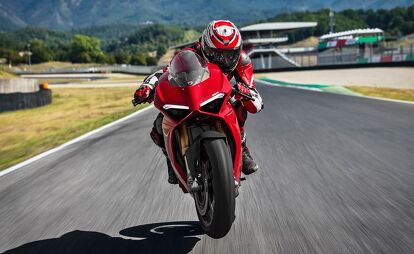











































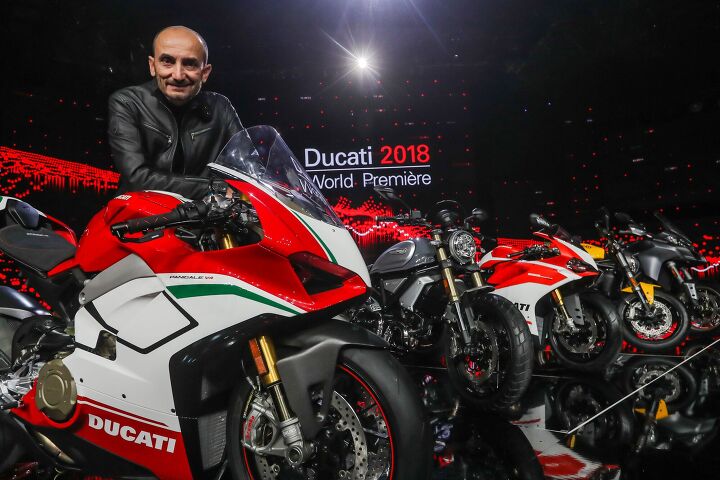


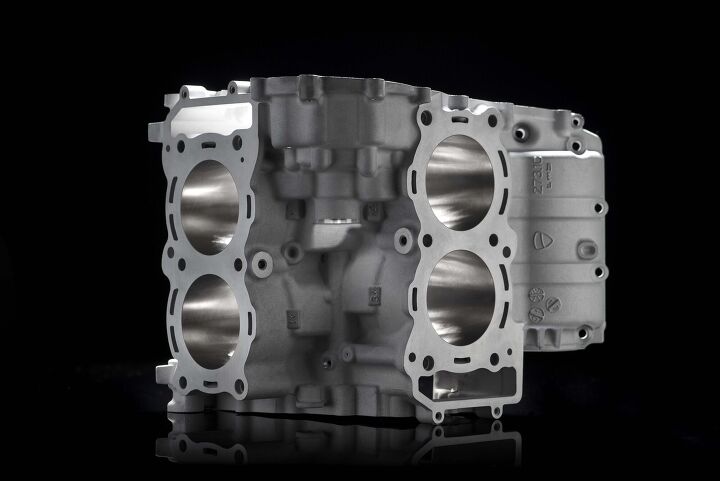























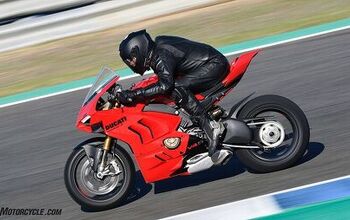
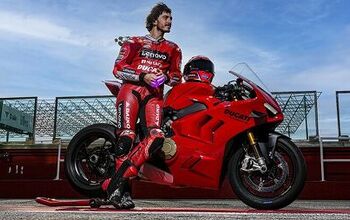
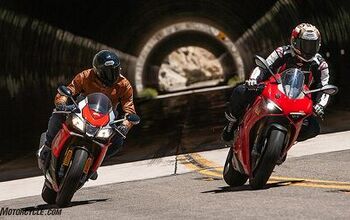






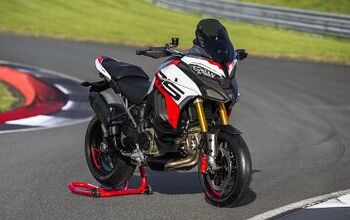

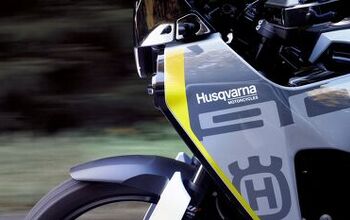




Comments
Join the conversation
The Panigale looks better. Heck, the SuperSport looks better. Not a fan of the looks. But hey, they're tryin'. And the performance should be supreme.
Reading through this again makes me think it will be entirely possible for an owner who doesn't race or attend track days to use only 33% of the features of this bike. I think Ducati should offer a 'futility discount' for those of us who fit that category but want to buy the damn thing anyway.